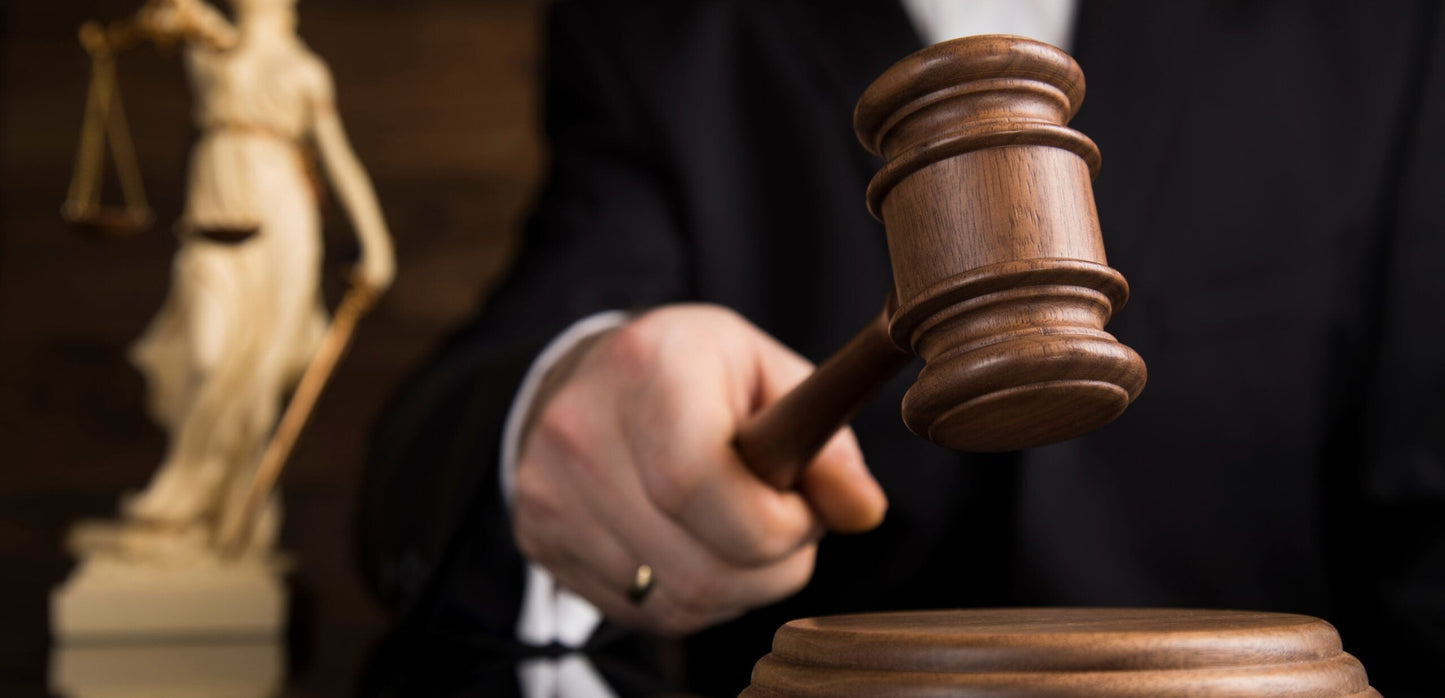
However, the FCC hasn’t just been sued once. There was another recent Federal case against the FCC, which lasted a year and resulted in a verdict that opens up a lot of possibility for positive change on a state level. This one focuses on another area of corruption not directly related to wireless technology’s harmful health effects.
It was discovered that for nearly two decades, the FCC has been allowing several big telecoms who provide both wireless and wired phone services to pull a sleight of hand, secretly repurposing funds paid by landline telephone subscribers that were promised to go towards building up fiber optic infrastructure to all households, into the buildup of 5G wireless. The FCC didn’t just allow it, but encouraged it due to their flawed accounting rules that do not hold wireless service to the same strict regulations as landline, local phone service.
As a result, telecoms have been tempted by the massive profits they could acquire through this “legal cheating” that the FCC has allowed. Intentionally or unintentionally, the FCC and several big telecoms have created the Digital Divide. If you haven’t yet heard that term, it refers to the disproportionate access to high speed internet in urban and high income areas, compared to rural and low income areas which often have slow or nonexistent internet capabilities.
In modern times when nearly every form of human progress is dependent on connectivity, this unfair playing field ensures that the wealthy get wealthier and the poor get poorer, instead of providing equal opportunity for every person who is motivated to succeed. Internet access should be seen as a household utility, like electricity and water. The Digital Divide is a huge social issue that could be easily fixed, as this lawsuit points out.
5G Wireless Is Being Funded By Landline Customers Who Were Promised Fiber Optic
The heart of this unfortunate circumstance is based on a decades long, half a trillion dollars’ worth broken promise. The stated goal, nearly 20 years ago, was to build out high speed fiber optic connections to 100% of households all across the United States, creating a culture of connectivity and equal opportunity to all U.S. citizens.To achieve this goal, local landline phone service subscribers were charged extra fees with every single phone bill, for decades, amounting to a total of thousands of dollars per household, to ensure that this future of connectivity was actualized for every home and family. The fees were specifically promised to go towards the built out of FTTP, or “fiber to the premises”, which means a direct fiber optic connection to every home and office. This never ended up happening in 25% of homes, which increases to 35-40% in low income areas. Therefore, to get connected, these people are forced to subscribe to the more expensive and relatively slower and less reliable wireless services as a poor substitute for high speed in-home internet access.
So where did this over half a trillion dollars of extra funds go?
According to the telecom accounting records (and the direct admission of industry spokespeople to their investors), it went towards building up the fiber optic infrastructure to cell towers, including the millions of new 5G “small cells” being installed all over the country, especially in larger cities.
What many people don’t know is that wireless service depends on fiber optic lines for the majority of its data transmission. The “wireless” part is just the very end of the line, from tower/antenna to the user’s device, and in the case of 5G this is often just 1,000 feet or less because the range of 5G is so short. These fiber optic lines only benefit the wireless companies, even though it would be easy (and relatively inexpensive) to extend the lines to nearby homes to give them direct access, freeing each family from being overly reliant on wireless services.
Local, state-based landline utilities are usually provided by the same big telecoms that also provide wireless, although they technically have an “affiliate” relationship. For example, Verizon NY (which provides New York’s local phone service) and Verizon Wireless are affiliates, basically controlled by the same company, Verizon. This makes it easy to fudge profits and expenses to make things look a certain way. You may have heard that “local phone service and wireline internet are unprofitable” compared to the highly profitable wireless services. This is completely inaccurate, and only due to letting “local phone services” pay for the entire backhaul that wireless service depends on. It gives the false impression to the public that wireless is more profitable, and therefore a better option to rely on for our connectivity needs.
If 5G wireless had to pay its own infrastructure expenses, it literally could not fund itself, by a long shot.
Who Dares To Sue the FCC?
The Irregulators are an independent consortium of senior telecom experts, analysts, forensic auditors, and lawyers who are former senior staffers from the FCC, state advocates and Attorneys General Office experts and lawyers, as well as former telco consultants. Members of the group have been working together, in different configurations, since 1999.Bruce Kushnick and Scott McCullough are the primary spokespeople of the Irregulators.
Bruce has been a telecom analyst for over 30 years, and has been involved in several important technology upgrades over the decades, including touchtone phone, caller ID and voice message capabilities. His newest tome of a book (581 pages!) is freely available to download and read, called “The Book of Broken Promises: $400 Billion Broadband Scandal & Free the Net”, and is the third writing in a related trilogy. He writes the many extensive articles detailing this issue and court case, and is the face of all the other consumer advocacy work they are doing to ensure fair play by the telecoms and the FCC.
Scott is the highly educated and experienced cutthroat attorney who took the FCC head on in this court case. His practice focuses on communications, computer and internet law and regulation, with an emphasis on representation of consumers and small competitive and new technology application and service providers. He has unparalleled knowledge and experience relating to those places where technology and regulation intersect – and often collide.
Scott’s participation in this case is especially relevant, as he just signed on as an attorney in the other FCC lawsuit by the Children’s Health Defense, focused on the FCC’s obsolete wireless “health guidelines”, which we discussed in a previous article.
A Step In the Right Direction: The Irregulators Freed the States From the FCC
Almost a year after the Irregulators challenged the FCC in the DC Court of Appeals about the FCC’s cost accounting rules and formulas, the Court issued an opinion that opens the door for the next stage of the Irregulators’ plan. The Court essentially stated that this fight cannot be fought in a Federal court, and remitted power over this issue to the state jurisdictions. They basically gave each state permission to demand correction of the fraudulent accounting of their own local services, and pursue these lost funds. This officially closed the FCC lawsuit through the DC Court of Appeals, which was what the Irregulators were hoping would happen.
The next step for the Irregulators is letting each state know that their hands are no longer tied by FCC “rules”, and that they can (and should!) go after the misappropriated funds, and ensure that they are used to complete the long overdue buildout of local high speed internet to ALL residences.
If most or every state jumps on this and decides to do it (once they are informed that they have the power to do so), this will retract massive amounts of wrongly placed funding from 5G. This will be a very good thing, as 5G implementation has been extremely rushed, barreling over and ignoring the many concerns of local municipalities and residents, from health concerns for humans, animals and the environment, to aesthetic issues relating to intrusively placed 5G infrastructure reducing property values. Slowing down the illegitimate funds for 5G will force the FCC and telecoms to face the health issues involved that they have been blatantly ignoring as they are singly focused on implementing their technology as fast as possible. It will also force them to find a legitimate and fair way to fund their wireless pursuits.
Wireless services are certainly useful, but ideally only as an adjunct to high speed wired connections to residences and businesses. We elaborate a lot more on why this is the case in another article, Why Wired Internet in the Home & Office Is Better Than 5G.
What You Can Do To Help
The best way you can help is to contact your local representatives, letting them know that they have the power to ensure that the telecoms are serving their constituents as fairly and honorably as possible. You can tell them to stand up for the people’s rights to equal access to basic utilities, as well as being protected from the currently unavoidable health risks of wireless radiation in their environment. The standards we hold the FCC and telecoms to needs to be raised.The state legislators can refer to New Hampshire’s great example. In 2019, they passed a law establishing a commission to study the health and environmental effects of evolving 5G technology. The commission just released its final report in November of 2020, and it sets a wonderful example that other states can follow. The report issued several recommendations regarding 5G, including:
- warnings on state agencies’ websites about the harms of RF radiation, including 5G small cells, and specific warnings concerning babies, children and pregnant women
- recommendations that wireless antennas be placed at a safer distance from homes, schools and businesses
- recommendations that schools and libraries move away from Wifi and instead use hardwired internet connections
- encourage statewide deployment of fiber optic internet connections to serve all public and commercial properties
- encourage the state to consult with agencies with appropriate scientific expertise about RF radiation dangers, to establish safer protocols to protect the natural environment from RF harm
You can read the full report here: State of New Hampshire’s 5G Final Report
Let your state representatives know what New Hampshire has done, and what the Irregulators have done to free the states from the previous assumption that they could not devise their own accounting rules, and had to rely on the FCC’s rules.
"The states are free to do what they want. Our strategy in bringing this case was to secure a definitive answer about the rights of states vs the control by the FCC over the financial accounting. The Court made it clear that the states are independent from the FCC and from the application of the federal accounting formulas." -- Bruce Kushnick
Resources:
“They Created the Digital Divide By Design” – https://newnetworks.com/digitaldividebydesign/
“Irregulators Big Win: We Freed the States From the FCC” – http://irregulators.org/irregulatorsbigwin/
“The Irregulators: An Independent, Expert Telecom Team” – http://irregulators.org/who-we-are/
“Solve the Digital Divide by Halting Billions in Cross-Subsidies: Verizon NY 2019 Annual Report” – https://kushnickbruce.medium.com/solve-the-digital-divide-by-halting-billions-in-cross-subsidies-verizon-ny-2019-annual-report-405ddf9b4ac
“5G Wireless Is Not Profitable When the Wired, State-Based, Utility Cross-Subsidies Are Removed” – https://kushnickbruce.medium.com/5g-wireless-is-not-profitable-when-the-wired-state-based-utility-cross-subsidies-are-removed-f7888e343094

